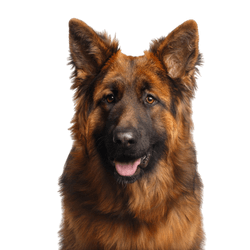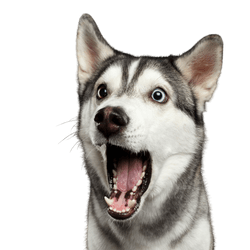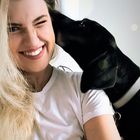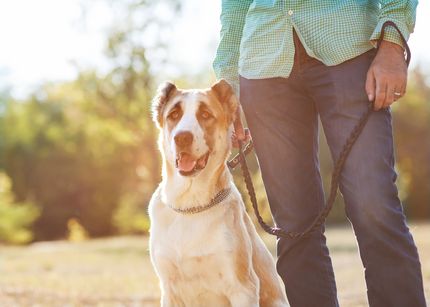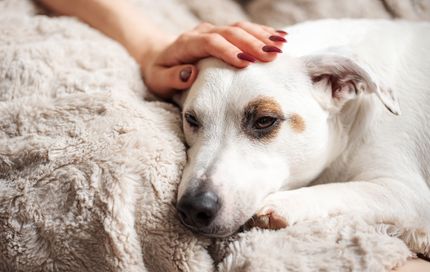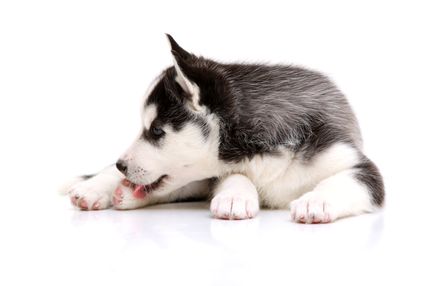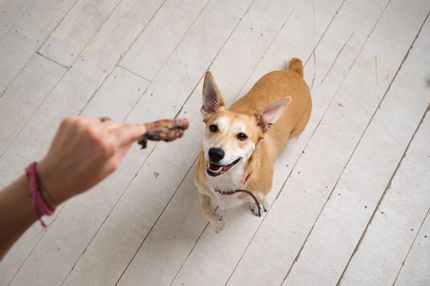Facts & Origin
German Shepherd and Siberian Husky in one
The Gerberian Shepsky is an impressive hybrid breed resulting from the deliberate crossing of a German Shepherd with a Siberian Hus ky. The name is made up of the initial syllables of both breeds: "Ger" for German Shepherd and "-berian" for Siberian Husky.
The breeding of the Gerberian Shepsky probably began in the last two to three decades in the USA, especially in the wake of the increasing popularity of so-called designer dogs. The aim of this mix was to combine the intelligence, willingness to work and loyalty of the shepherd dog with the energy, stamina and friendly nature of the husky - in a dog that is both visually and characteristically impressive.
Criticism of the Gerberian Shepsky
As with many hybrid breeds, there is also criticism of the Gerberian Shepsky. Although both parents are well-known, established breeds with great potential, their differences in temperament and husbandry requirements harbor risks.
The German Shepherd is a work-oriented, obedient working dog that works closely with humans. The Siberian Husky, on the other hand, is a more independent, freedom-loving sled dog that likes to make its own decisions. The mixture of both personalities can lead to a dog that places high demands on training, activity and leadership - and can quickly become headstrong or destructive if underchallenged.
Another point of criticism: The Gerberian Shepsky's size and energy make it unsuitable for beginners or people with little time. Without clear structure, plenty of exercise and mental stimulation, this hybrid breed can quickly become overwhelmed or underchallenged.
In addition, the Gerberian Shepsky is not recognized as a breed and there are no official standards for health or behaviour. If bred uncontrolled, this can lead to behavioral problems or genetic diseases.
Suitability of the Gerberian Shepsky
The Gerberian Shepsky is not a beginner's dog, but can be an impressive and loyal companion for active, experienced owners. It is particularly suitable for sporty people, couples or families who enjoy being outdoors, are keen on training and dog sports and are willing to invest time and energy in training and exercising their dog on a daily basis.
Typically, the Gerberian Shepsky shows a high willingness to learn, alertness and eagerness to move. If he is encouraged and clearly guided, he is a loyal dog who is willing to work and can build a close bond with his humans. At the same time, it often has the independence and temperament of the husky - which means it needs clear rules, but also sensitive leadership and variety.
This hybrid breed is well suited to:
dog sports such as agility, obedience or mantrailing
active families with dog experience
People with a large garden and lots of time
Outdoor enthusiasts who travel a lot with their dog
However, the Gerberian Shepsky is not suitable for living in a small apartment without exercise and activity.
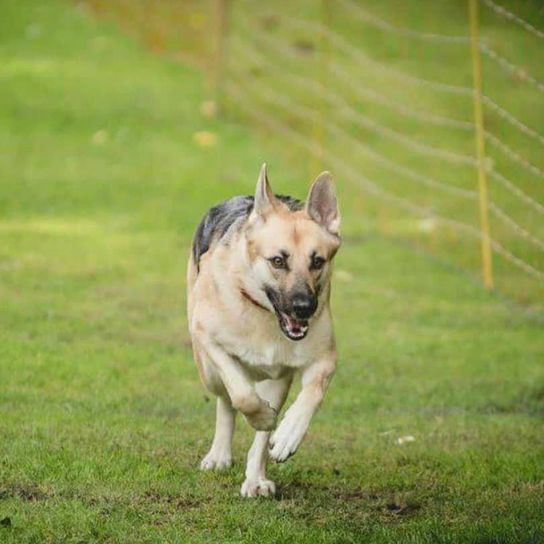
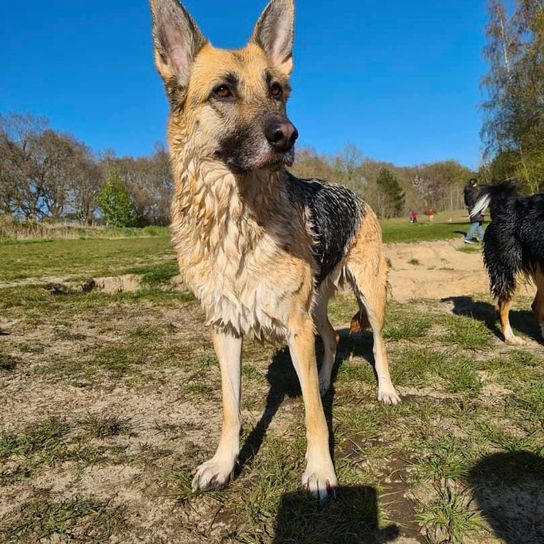
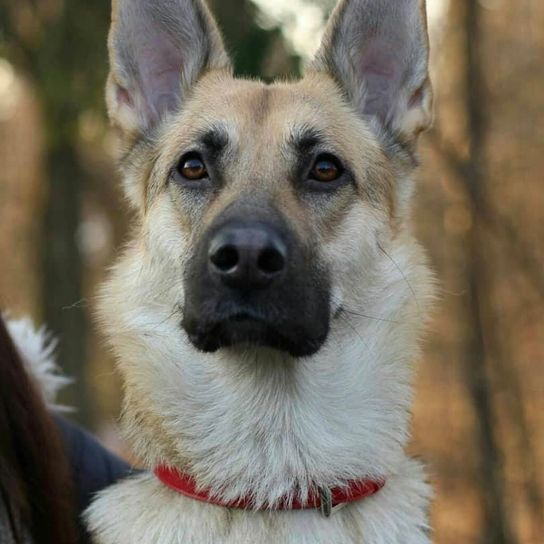

| Alternate Name | Siberian Shepherd, Shepsky |
| Origin | Germany - USA |
| Life expectancy | 9 - 15 years |
| Care requirements | low-maintenance - high-maintenance |
| Activity level | high |
| FCI group | not recognised |
| AKC group | not recognised |
| KC group | not recognised |
More German Shepherd mixes
More Siberian Husky mixes
Attitude, character and temperament of the breed
Possible character traits of the Gerberian Shepsky
The Gerberian Shepsky is generally an intelligent, energetic and loyal dog that has both the eagerness to work and docility of the German Shepherd and the stamina and independence of the Husky.
He is often alert, attentive and very capable of learning, which can make him an excellent companion for active people. At the same time, however, depending on their genetic make-up, they also have an independent, hunting instinct or stubbornness. This mixture makes for a dog that needs clear, consistent and fair leadership.
Gerberian Shepskys are usually very people-oriented, form a strong bond with their family and are often playful and friendly, especially when well socialized. They usually get on well with children and other dogs - but only if they are sufficiently exercised and mentally challenged. Without structure and activity, they are prone to boredom, frustration or undesirable behavior.
This hybrid breed is not for couch potatoes - it needs space, exercise, tasks and attention.
Character
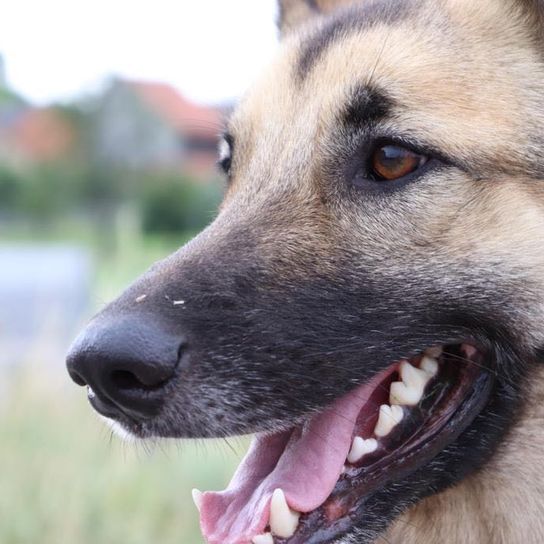
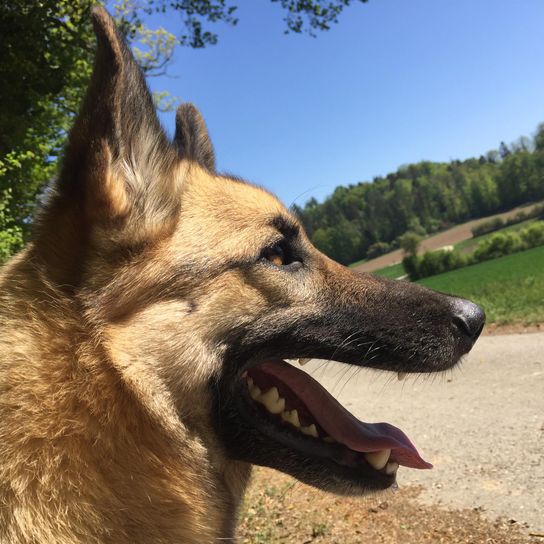
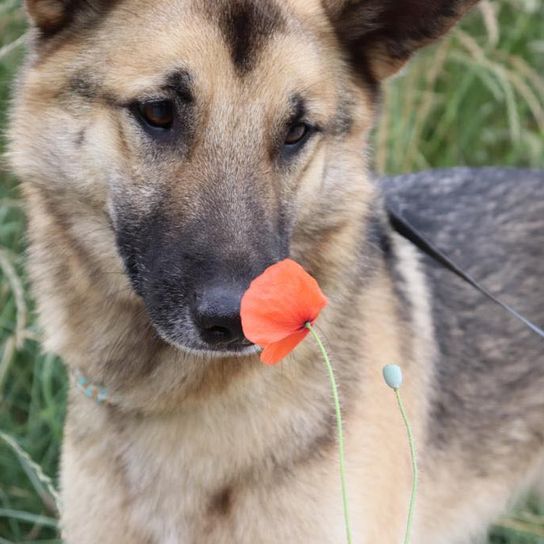
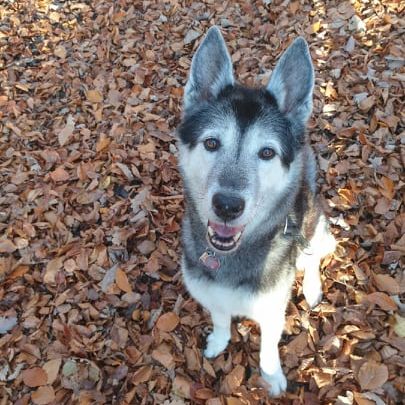
Possible diseases of the Gerberian Shepsky
As the Gerberian Shepsky comes from two large, active breeds, its health is heavily dependent on the quality of the breeding. Reputable breeders have both parents tested for hereditary diseases - however, certain diseases cannot be ruled out.
Possible diseases in the Gerberian Shepsky:
Hip dysplasia (HD) - mainly inherited from German Shepherds
Elbow dysplasia (ED)
Eye diseases, e.g. cataracts or progressive retinal atrophy (PRA)
Epilepsy - can occur in both parents
Autoimmune diseases
Digestive problems or food intolerances
In rare cases: Degenerative myelopathy or heart disease
Regular veterinary check-ups, a high-quality diet, the right amount of exercise and targeted physical and mental exercise help to keep them healthy.

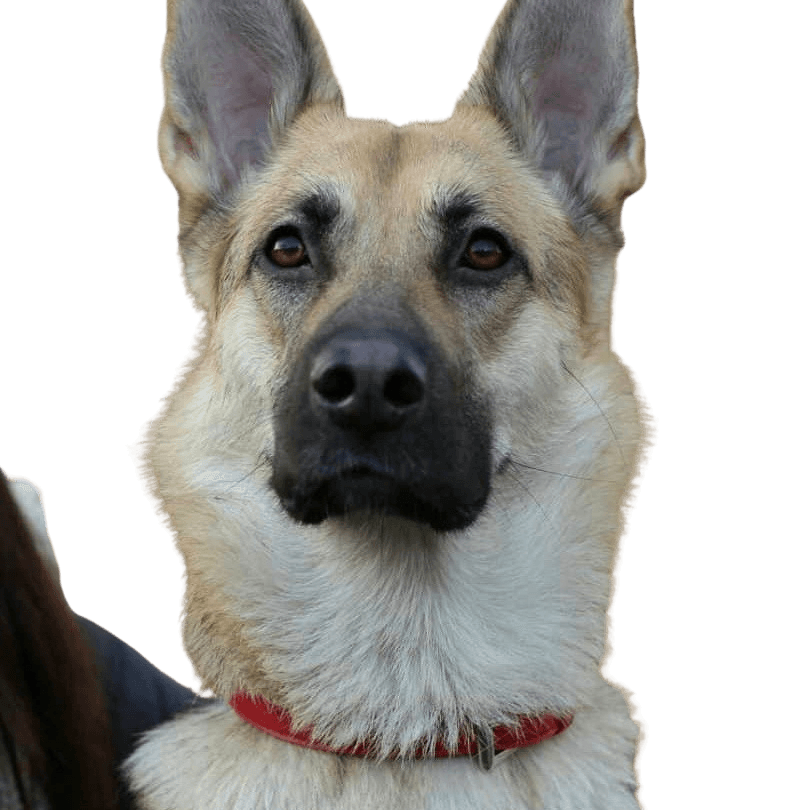
This is what a Gerberian Shepsky can look like
The Gerberian Shepsky is a large, athletic dog that is usually very impressive - both due to its appearance and its expressive look. The shoulder height is usually between 50 and 65 cm, the weight between 25 and 40 kg - depending on which parent animals dominate.
In most cases, the body is muscular, harmoniously built and well proportioned. The head usually shows a combination of both breeds: strong skull, straight muzzle, upright or slightly sideways ears. The eyes are often light blue, brown or different colors (heterochromia) - a typical characteristic that can be inherited from the husky.
The coat is medium to long, dense and often double-layered, with strong seasonal shedding. The coat texture can be both soft like the Husky and somewhat coarser like the German Shepherd. The Gerberian Shepsky therefore requires regular grooming, especially during the shedding season.
Coat colors vary greatly: combinations of black, grey, white, beige or brown are often seen, with typical husky markings or a dark shepherd mask.
Overall, the Gerberian Shepsky looks like a powerful, alert and very present dog that radiates elegance and energy at the same time.
| Fur length | long - medium |
| Fur | flat coated |
| Ear shape | Standing Ears |
| Tail | fanned out |
| Anatomy | massive, strong, rugged, strong, sporty |
| Size ♀ | 50 - 60 cm |
| Weight ♀ | 16 - 32 kg |
| Size ♂ | 54 - 65 cm |
| Weight ♂ | 20 - 40 kg |
| Suitable For | - |
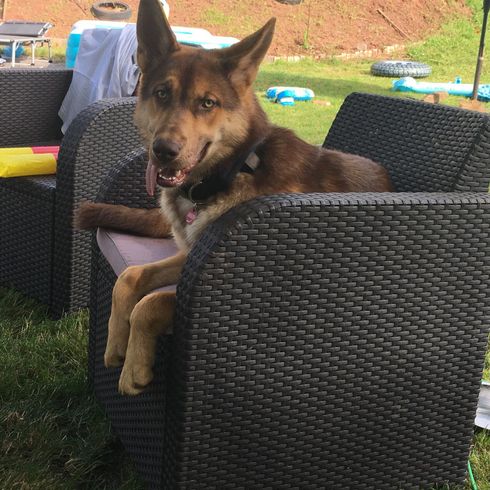
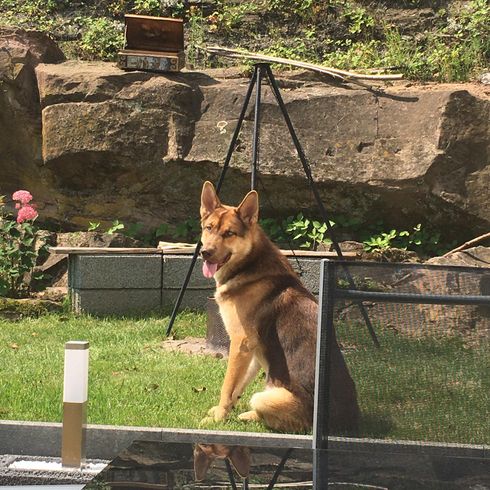
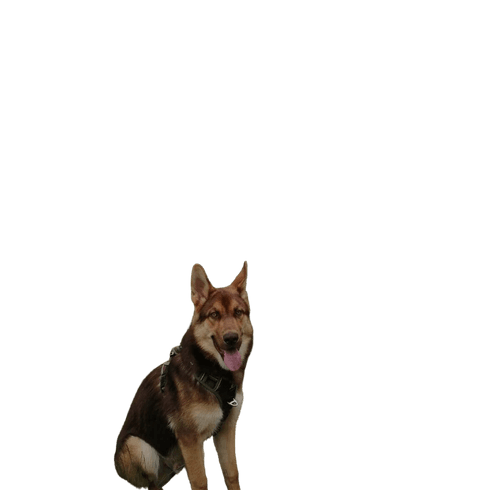
Known Diseases
Hip dysplasia (HD)
Hip dysplasia (HD) is a genetic condition in dogs where the hip joint is not shaped properly. This leads to pain, stiffness and restricted movement.
Eye diseases
Often occur with allergies and intolerances.
Skin inflammations
Can be hereditary in certain breeds.
FAQ
-
The most common health problems in a German Shepherd Siberian Husky mix include hip and elbow dysplasia and eye problems such as progressive retinal atrophy and cataracts.
-
The average life expectancy of a German Shepherd/Siberian Husky mix is 10-12 years.
-
Yes, German Shepherds and Siberian Husky mixes are generally good with children. However, as with all dogs, it is important to introduce them to children at an early age and socialize them properly.
-
Gerberian Shepskys need a moderate amount of exercise. A daily walk or run is enough, but they also enjoy playing fetch or going for a hike.
-
To really buy the best food, it is always best to consult a trained dog nutritionist. Mixed with natural chews (e.g. LéWuff horse sticks ), this is certainly the perfect mix.

